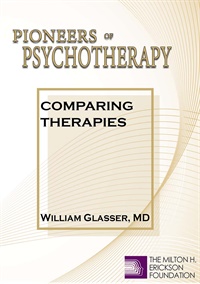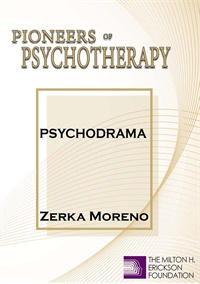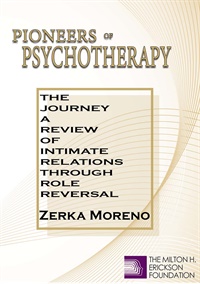
- Average Rating:
- Not yet rated
- Topic Areas:
- Clinical Demonstrations | Role Play | Psychotherapy
- Bundle(s):
- Pioneers of Psychotherapy Bundle
- Categories:
- Pioneers of Psychotherapy | Evolution of Psychotherapy | Evolution of Psychotherapy 2000
- Faculty:
- William Glasser, MD
- Course Levels:
- Master Degree or Higher in Health-Related Field
- Duration:
- 00:56:00
- Format:
- Audio and Video
- Original Program Date:
- May 27, 2000
- Short Description:
- William Glasser (2000) uses role-play with Marie who is simulating Paul, a male client from her place of employment. Paul has marriage problems. Marie, as Paul, is asked to role-play his wife. Glasser highlights choices, examines the client’s thinking, and focuses on responsible behavior. After the demonstration Glasser explains his work.
- Price:
- $59.00 - Base Price

- Average Rating:
- Not yet rated
- Topic Areas:
- Clinical Demonstrations | Reality Therapy | Psychotherapy | Abuse
- Bundle(s):
- Pioneers of Psychotherapy Bundle
- Categories:
- Pioneers of Psychotherapy | Evolution of Psychotherapy | Evolution of Psychotherapy 1995
- Faculty:
- William Glasser, MD
- Course Levels:
- Master Degree or Higher in Health-Related Field
- Duration:
- 00:59:00
- Format:
- Audio and Video
- Original Program Date:
- Dec 15, 1995
- Short Description:
- William Glasser (1995) demonstrates with a simulated client who is in an emotionally abusive relationship. This client is depressed and unhappy with her life. The goal of the first session is to focus on a behavioral change that can be accomplished as a first step. Glasser concludes with an explanation of the demonstration and of control theory.
- Price:
- $59.00 - Base Price

- Average Rating:
- Not yet rated
- Topic Areas:
- Clinical Demonstrations | Psychodrama | Psychotherapy | Role Play | Art and Creativity
- Bundle(s):
- Women Pioneers of Psychotherapy | Pioneers of Psychotherapy Bundle
- Categories:
- Pioneers of Psychotherapy | Evolution of Psychotherapy | Evolution of Psychotherapy 2000
- Faculty:
- Zerka Moreno
- Course Levels:
- Master Degree or Higher in Health-Related Field
- Duration:
- 01:01:00
- Format:
- Audio and Video
- Original Program Date:
- May 27, 2000
- Short Description:
- Zerka Moreno (2000) emphasizes the importance of spontaneity and creativity while demonstrating with Christi, who is asked to see her family photo and then construct it on stage using volunteers from the audience. These volunteers act as “auxiliary egos.” Following this demonstration Moreno plays all of the characters in a rolereversal she did with her 3 year-old son.
- Price:
-
Nate Sub 1.1 Price is $0.00
price reduced from Base Price - $59.00

Credit available - Click Here for more information
- Average Rating:
- Not yet rated
- Topic Areas:
- Clinical Demonstrations | Intimacy | Relationships | Psychotherapy | Role Play
- Bundle(s):
- Women Pioneers of Psychotherapy | Pioneers of Psychotherapy Bundle
- Categories:
- Pioneers of Psychotherapy | Evolution of Psychotherapy | Evolution of Psychotherapy 1985
- Faculty:
- Zerka Moreno
- Course Levels:
- Master Degree or Higher in Health-Related Field
- Duration:
- 01:01:00
- Format:
- Audio and Video
- Original Program Date:
- Dec 12, 1985
- Short Description:
- Zerka Moreno (1985) explains the importance of role reversal. She demonstrates with Lori who discusses concerns related to her marriage. She examines her relationship with her father. Lori is asked to create a family structure using members from the audience. Moreno ends by sharing information about her own experiences in Psychodrama.
- Price:
- $59.00 - Base Price
Please wait ...

